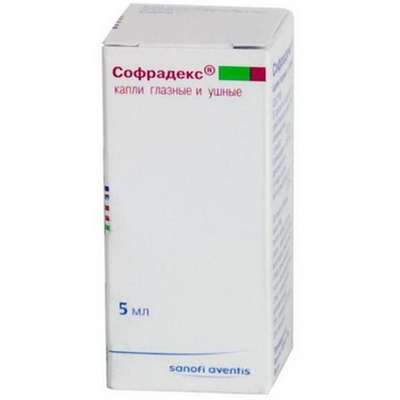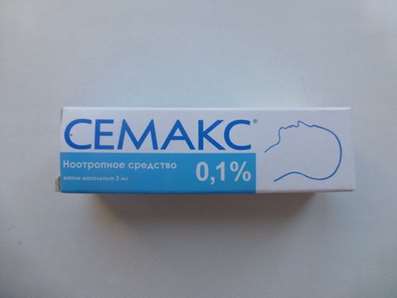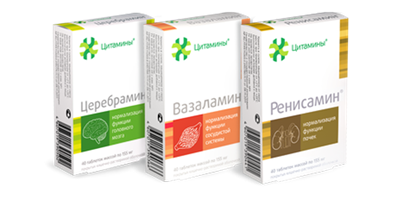Instruction for use: Acebutolol
I want this, give me price
Trade name of the drug – Acecor, Sectral
The Latin name of the substance Acebutolol
Acebutololum (genus. Acebutololi)
Chemical rational name: (±) -N- [3-Atsetil-4- [2-hydroxy-3 - [(1-methylethyl) amino] propoxy] phenyl] butanamide (as hydrochloride)
Gross formula C18H28N2O4
Pharmacotherapeutic group: Beta-blockers
The nosological classification (ICD-10)
I10 Essential (primary) hypertension: hypertension; Arterial hypertension; Arterial hypertension crisis course; Essential Hypertension; Essential hypertension; Essential hypertension; Essential hypertension; Essential hypertension; Primary hypertension; Arterial hypertension, complications of diabetes; The sudden increase in blood pressure; Hypertensive disorders of blood circulation; hypertensive condition; hypertensive crises; arterial Hypertension; malignant Hypertension; Hypertonic disease; hypertensive crises; accelerated hypertension; malignant hypertension; The aggravation of hypertensive disease; Transient hypertension; Isolated systolic hypertension
I15 Secondary hypertension: Arterial hypertension, complications of diabetes; hypertension; The sudden increase in blood pressure; Hypertensive disorders of blood circulation; hypertensive condition; hypertensive crises; hypertension; arterial Hypertension; malignant Hypertension; hypertensive crises; accelerated hypertension; malignant hypertension; The aggravation of hypertensive disease; Transient hypertension; hypertension; Arterial hypertension; Arterial hypertension crisis course; renovascular hypertension; Hypertension symptomatic; Renal hypertension; Renovascular hypertension; renovascular hypertension; Symptomatic hypertension
I20 Angina [angina]: Heberden disease; Angina pectoris; The attack of angina pectoris; recurrent angina; Spontaneous angina; Stable angina pectoris; Angina rest; Angina progressing; Angina mixed; Angina spontaneous; stable angina; Chronic stable angina; Angina Syndrome X
I25 Chronic ischemic heart disease: Coronary heart disease on the background of hypercholesterolemia; Coronary heart disease is a chronic; Coronary heart disease; Stable coronary artery disease; Percutaneous transluminal angioplasty; Myocardial ischemia, arteriosclerosis; Recurrent myocardial ischemia
I47.1 Supraventricular tachycardia: Supraventricular paroxysmal tachycardia; supraventricular tachyarrhythmia; supraventricular tachycardia; Supraventricular arrhythmias; Supraventricular paroxysmal tachycardia; supraventricular tachyarrhythmias; supraventricular tachycardia; Neurogenic sinus tachycardia; orthodromic tachycardia; Paroxysmal supraventricular tachycardia; Paroxysm of supraventricular tachycardia; Paroxysm of supraventricular tachycardia with WPW-syndrome; Paroxysm of atrial tachycardia; Paroxysmal supraventricular tachyarrhythmia; Paroxysmal supraventricular tachycardia; Politopnye atrial tachycardia; Atrial fibrillation; Atrial tachycardia is true; Atrial tachycardia; Atrial tachycardia with AV block; reperfusion arrhythmias; Reflex Bertsolda-Jarisch; Recurrent sustained supraventricular paroxysmal tachycardia; Symptomatic ventricular tachycardia; Sinus tachycardia; Supraventricular paroxysmal tachycardia; supraventricular tachyarrhythmia; supraventricular tachycardia; supraventricular arrhythmia; supraventricular arrhythmias; Tachycardia of AV connections; supraventricular tachycardia; Tachycardia orthodromic; sinus tachycardia; The nodal tachycardia; Chaotic atrial tachycardia politopnye; Wolff-Parkinson-White
I47.2 Ventricular tachycardia: Torsades de pointes (torsade de pointes); Symptomatic ventricular tachycardia; Torsades de pointes in myocardial infarction; Ventricular fibrillation; Ventricular tachycardia; Ventricular tachyarrhythmias; Ventricular tachycardia; ventricular Tachycardia; Life-threatening ventricular arrhythmias; Sustained ventricular tachycardia; Sustained monomorphic ventricular tachycardia; Paroxysmal ventricular tachycardia torsades; Paroxysmal ventricular tachycardia
I48 Atrial fibrillation and flutter: Permanent atrial tachyarrhythmias; Relief frequent ventricular rate during atrial flutter or blink; atrial fibrillation; Paroxysm of atrial fibrillation and flutter; Paroxysm of atrial fibrillation; Paroxysmal atrial fibrillation; Atrial premature beats; Tahiaritmicheskoy atrial fibrillation; Tahisistolicheskoy atrial fibrillation; auricular flutter; Life-threatening ventricular fibrillation; Atrial fibrillation; Chronic atrial fibrillation; supraventricular arrhythmia; Paroxysmal atrial fibrillation and flutter; Paroxysmal fibrilloflutter; Atrial premature beats
I49.4 Other and unspecified premature depolarization: extrasystole arrhythmia; extrasystole; extrasystole unspecified
R07.2 Pain in the heart: neuroses of the heart; Myocardial ischemic pain; Pain syndrome in myocardial infarction; cardialgia; cardioneurosis; Cardiac syndrome; Pain in cardiac patients; Cardialgia on background dyshormonal myocardial dystrophy; Functional cardialgia; Psevdostenokardiya; pericardial pain
CAS code 37517-30-9
Description of Acebutolol
White or almost white powder. It is soluble in water, at least - in alcohol.
Pharmacological Properties of Acebutolol
Pharmachologic effect - antianginal, hypotensive, anti-arrhythmic.
Blocks beta1-adrenergic receptors, has its own sympathomimetic activity and membrane stabilizing properties. It normalizes high Sad and Dad while maintaining the heart rate and cardiac output. Hypotension is a 1.5 h after administration, reaching a peak in 3-8 hours, it can be extended to 24-30 hours and stabilized by the end of 2 weeks of treatment. Antihypertensive effect due CNS depression, decreased cardiac output, the synthesis of renin activity and, baroreceptor sensitivity reduction, and ultimately, reduction in peripheral sympathetic effects. Antiarrhythmic properties are associated with the suppression of sinus node automaticity, lengthening the duration of the refractory period, the slowdown of the AV node. It does not have any negative effects on lipid metabolism.
The experimental studies have been observed when a acebutolol rats and mice at doses up to 300 mg / kg / day (15 MRDC) and diatsetolola at doses up to 1800 mg / kg / day indication of carcinogenicity. During the Ames test for mutagenicity Negative results have been obtained. The male and female rats at doses up to 240 mg acebutolol / kg / day and diatsetolola 1000 mg / kg / day were observed adverse effect on fertility in rats and rabbits dose of 6.8 to 31.5 times, respectively, and excess MRDC teratogenicity actions are not provided; acebutolol at a dose of 135 mg / kg / day delayed the growth of fruits and diatsetolol (450 mg / kg / day) increased postimplantation death in rabbits.
Almost all (97%) absorbed from the gastrointestinal tract (meal slows absorption). Bioavailability is about 40%, since under intense biotransformation at "first pass" through the liver, where it is partially converted into a more active metabolite - diatsetolol. Bioavailability acebutolol increased 2-fold in the elderly, due to the decrease metabolism in "first pass" through the liver and reducing kidney function. Acebutolol Cmax achieved in 2.5 hours, diatsetolola -. 3.5 h after blood acebutolol (26%), diatsetolol (09.06%) bound to proteins. T1 / 2 - 12 h and 16 h, respectively (T1 / 2 diatsetolola elongates 2-3 times in renal insufficiency). Acebutolol and diatsetolol pass through the blood-tissue barriers, including placenta, enters the breast milk. Excreted by the kidneys - 30-40% (mainly diatsetolol) and gastrointestinal tract - 50-60% (acebutolol).
Indications for Acebutolol
Hypertension, angina pectoris (prevention of attacks), myocardial infarction, supraventricular and ventricular tachyarrhythmia, atrial fibrillation, hypertrophic cardiomyopathy, mitral valve prolapse, headache vascular genesis, tremor, anxiety, hyperthyroidism.
Contraindications for Acebutolol
Chronic heart failure decompensating, cardiogenic shock, sick sinus syndrome, AV block II and III degree, bradycardia (less than 50 u. / Min), hypotension (including myocardial infarction).
Restrictions to application
Bronchial asthma, obstructive airway disease, impaired hepatic or renal function, peripheral vascular disease (Raynaud's disease or the other.), Heart failure (decompensated stage), pheochromocytoma, diabetes, hyperthyroidism, depression, myasthenia gravis, psoriasis, pregnancy, breast-feeding, elderly and children's age.
Pregnancy and breast-feeding
Perhaps if the expected effect of therapy outweighs the potential risk to the fetus. At the time of treatment should stop breastfeeding.
Side effect of Acebutolol
From the nervous system and sensory organs: sleep disturbance (11%), insomnia (6%), dizziness (6%), headache (6%), somnolence (3%), nightmares (2%), depression (2 %), blurred vision (2%), fatigue, weakness, anxiety, paresthesia, seizures, decrease production of tear fluid (dry mucous membranes of the eyes), eye pain.
Cardio-vascular system and blood (blood, hemostasis): chest pain (2%), deterioration of peripheral circulation, decompensated heart failure, AV block, bradycardia, hypotension.
From the digestive tract: dyspepsia (4%), diarrhea (4%), constipation (4%), nausea (4%), flatulence (3%), anorexia, hyperlipidemia, abnormal liver function (increased LDH, bilirubin, alkaline phosphatase et al. enzymes).
From the respiratory system: dyspnea (4%), vasomotor rhinitis (2%), cough (1%), bronchospasm, asthma status (rare).
With the genitourinary system: edema (2%), dizuricheskie disorder, dark urine, nocturia, weakening of libido.
Other: allergic reactions (rash - 2%), arthralgia and myalgia (2%), hypoglycemia.
Interaction
Verapamil, diltiazem, quinidine, halogenated anesthetic agents, amiodarone reinforce the negative foreign-and / or chronotropic effect. Hypotension is potentiated by other antihypertensives. It accelerates the depletion of catecholamine depot on background simpatolitikov (reserpine). With simultaneous use of insulin and oral antidiabetic drugs increases the symptoms of hypoglycemia. Incompatible with MAO inhibitors. It increases the likelihood of severe systemic reactions (anaphylaxis) due to the use of allergens (immunotherapy, skin tests).
Overdose
Symptoms: bradycardia, hypotension, bronchospastic reactions, heart failure.
Treatment: symptomatic: atropine (w / 3.1 mg), glucagon, pressor agents (dobutamine, epinephrine, dopamine), isoprenaline, diazepam, bronchodilators (theophylline, aminophylline, terbutaline), cardiac glycosides, diuretics; hemodialysis.
Routes of administration
Inside.
Precautions for substance Acebutolol
Before treatment should be compensated heart failure, in the future it is necessary to conduct monitoring of heart rate, blood pressure, and early identification of symptoms of heart failure. It is necessary to decrease doses in elderly patients with obstructive diseases of the airways, bradycardia. When the appointment of a pheochromocytoma is possible only in combination with an alpha-blocker. It should be borne in mind that in diabetic patients with treatment of hypoglycemia is not accompanied by tachycardia. Admission acebutolol possible 2 weeks after discontinuation of MAO inhibitors. During treatment it is necessary to exclude the use of alcoholic beverages (risk of orthostatic hypotension). During the surgery using a general anesthetic agent of choice should be an anesthetic with the least negative inotropic effect.
Cancelling acebutolol should be phased in over at least 2 weeks, because sudden cessation can cause severe arrhythmia, myocardial infarction. It should refrain from the use in pediatric practice, because safety and efficacy of its use in children has not defined. Be wary of during the drivers of vehicles and people skills relate to the high concentration of attention.
Special instructions
During treatment, you can change the test results in laboratory studies (titer growth of antinuclear antibodies and others.).

 Cart
Cart





